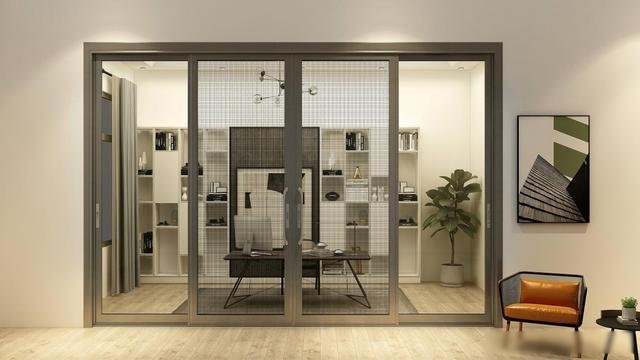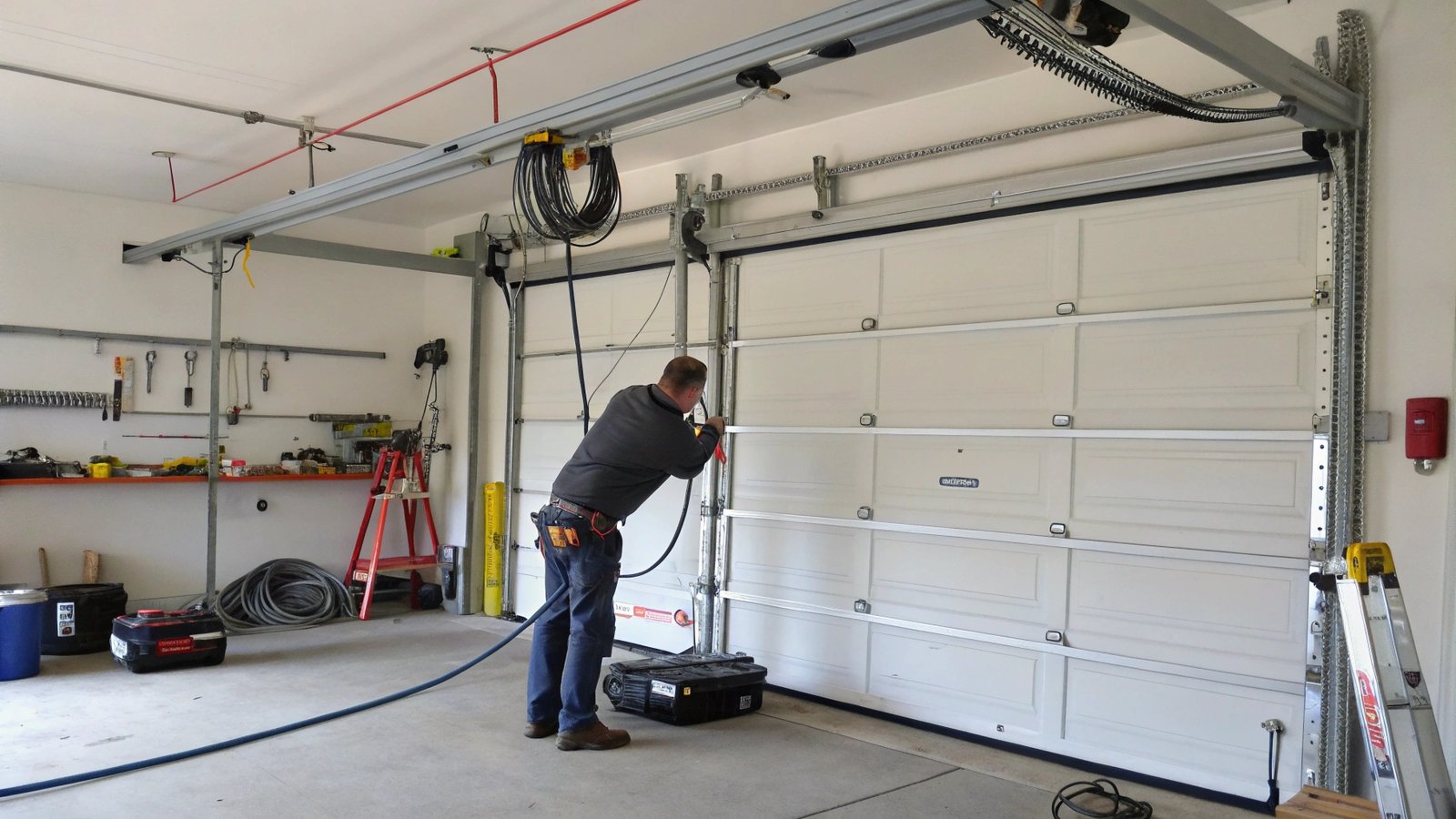Struggling with failing sliding doors? Inferior pulleys cause sticking, noise, and costly callbacks. This erodes trust and hurts your bottom line. Sourcing the right hardware is your solution.
High-quality sliding door pulleys are typically made from durable materials like nylon or Polyoxymethylene (POM), often paired with precision steel or stainless steel bearings. Key purchasing considerations include the door’s weight, track compatibility, intended usage environment (indoor/outdoor), and the desired level of smoothness and silence.

Understanding the raw materials is just the beginning. From my experience running a hardware factory, I know that a single pulley is part of a larger, dynamic system. A truly great product only performs well when it’s the right fit for the specific door and its application. To make the best purchasing decisions for your projects, you need to look at the complete picture. Let’s dig deeper into the factors that ensure you source the perfect sliding door system every time.
What are the considerations for a sliding door?
Sourcing a full sliding door system feels complex. A single wrong part can compromise the entire installation, causing delays and frustrating your clients. Focusing on key considerations simplifies everything.
The main considerations are the door’s weight and size, the track system’s material and profile, the roller’s material and bearing quality, and its intended use (interior, exterior, high-traffic). Getting these right ensures smooth, long-lasting performance.

In my years of manufacturing hardware for customers like Jacky in Canada, I’ve learned that a successful installation comes down to matching the hardware to the door, not the other way around. A heavy, solid wood door requires a completely different setup than a lightweight wardrobe door. We always start by asking our clients about these core factors to guide them to the right solution. It prevents problems before they even start. Thinking through these points systematically will make you a more effective purchaser.
Load Capacity and Door Dimensions
The first thing to check is the weight and size of your door panel. A heavy door made of solid wood or thick glass needs a heavy-duty roller system with a high load-bearing capacity1. If the pulley is underrated, it will fail quickly. Look at the supplier’s specifications for the maximum weight per roller or per door.
Track System and Compatibility
The roller must fit the track perfectly. Tracks come in different shapes (e.g., box track, I-beam) and materials (aluminum, steel). An aluminum track is lightweight and corrosion-resistant, great for most interior uses. Steel is stronger and better for very heavy industrial doors. The pulley’s wheel must match the track’s profile for smooth, stable movement.
Usage Environment
Where will the door be used? An exterior door needs hardware with excellent corrosion resistance2, like 304 stainless steel. For an interior door in a home, quiet operation is more important, so pulleys with high-quality nylon wheels and smooth bearings are ideal. For a commercial space with high traffic, durability is the top priority.
| Consideration | Key Factors | My Recommendation |
|---|---|---|
| Load Capacity | Door weight (kg/lbs), door height & width | Always choose a pulley rated for at least 25% more than the actual door weight. |
| Track System | Track material (Aluminum/Steel), track profile | For most residential and commercial projects, aluminum tracks offer the best balance. |
| Environment | Interior/Exterior, High/Low Traffic, Humidity | Use 304 Stainless Steel for all exterior or wet area (bathroom) applications. |
Which material is used for a sliding door?
Choosing the right door panel material is a critical decision. The wrong choice can lead to warping, high maintenance costs, or an aesthetic that just doesn’t fit the project’s design.
Sliding door panels are typically made from wood, glass, aluminum, or composite materials like MDF. The best choice depends on the desired look, budget, location, and performance requirements like insulation or soundproofing.

As a hardware manufacturer, we design our sliding systems to be versatile. Our rollers and tracks need to support everything from a classic, heavy oak door to a sleek, modern glass panel. I’ve seen customers use all kinds of materials, and each has its place. Understanding their properties helps you match them with the right hardware and meet your project’s goals. For example, a heavy door material absolutely requires a robust, heavy-duty pulley system like the ones we produce.
Wood: Classic and Versatile
Solid wood offers a timeless, warm aesthetic but can be heavy and susceptible to warping in humid conditions. Engineered wood and wood composites like MDF are more stable and cost-effective alternatives. They provide the look of wood without the high maintenance. When sourcing for wooden doors, you must confirm the door’s exact weight to choose the correct load-bearing hardware.
Glass: Modern and Bright
Glass panels, especially frameless ones, create a sense of openness and light. They are popular in modern offices and homes. Tempered or laminated glass is used for safety. While glass doors look light, they can be surprisingly heavy. The hardware for glass doors often requires special clamps instead of screws, and the rollers must be exceptionally smooth to complement the modern aesthetic.
Aluminum: Sleek and Durable
Aluminum-framed doors, often with glass or composite infill panels, are lightweight, strong, and highly resistant to corrosion. This makes them perfect for exterior applications or contemporary interior designs. Because they are lighter, you can sometimes use a more standard pulley system, but the quality of the rollers is still key to achieving that effortless glide.
| Material | Pros | Cons | Best For |
|---|---|---|---|
| Wood | Classic look, good insulation | Heavy, can warp, higher cost | Traditional interiors, feature doors |
| Glass | Modern, lets in light | Heavy, less privacy, security concerns | Offices, patios, modern homes |
| Aluminum | Lightweight, durable, low maintenance | Can feel cold, less insulating | Exterior doors, commercial spaces |
What materials are used in automatic sliding doors?
Automatic doors have many moving parts, so material choice is vital. A single failed component, from a sensor to a drive belt, can shut down the entire system, causing major disruptions.
Automatic sliding doors combine materials: aluminum for the door frames and operator housing, reinforced rubber or nylon for the drive belt, high-grade steel for motor parts, and tough POM or nylon for the guide pulleys.

While my factory specializes in the rollers and tracks for manual doors, we often supply heavy-duty roller assemblies for large, automated systems. I’ve worked with many engineers on these projects, and I can tell you that every single component is chosen for durability and precision. The system is only as strong as its weakest link. The materials must work together perfectly to provide safe, reliable, and continuous operation, often for thousands of cycles per day.
The Door Panels and Frame
The visible part of the door is almost always aluminum-framed glass. Aluminum is the perfect choice because it is strong enough to support large panes of safety glass, yet lightweight enough to be moved easily by the motor. The extrusion process allows for complex profiles that can hide weather stripping and wiring, giving it a clean, professional look.
The Operator and Drive System
This is the heart of the door. The main housing is typically extruded aluminum3 for strength and heat dissipation. Inside, the motor uses high-grade steel for its gears and shafts. The drive belt4 that moves the door is a critical component; it’s usually made from a composite rubber reinforced with fiberglass or steel cords, similar to a car’s timing belt, to prevent stretching and ensure precise movement.
Pulleys and Guides
The system uses several pulleys and guides. The main idler pulley that tensions the belt must be incredibly durable, often made from steel with a high-quality bearing. The small guide rollers that support the bottom of the door panel are usually made from a low-friction, high-wear material like POM or hard nylon to ensure the door glides silently without damaging the track.
| Component | Primary Material | Reason for Choice |
|---|---|---|
| Door Frame | Aluminum | Lightweight, strong, corrosion-resistant |
| Operator Housing | Extruded Aluminum | Strength, heat dissipation, precision |
| Drive Belt | Reinforced Rubber/Nylon | High tensile strength, flexibility, no stretching |
| Guide Rollers | POM / Nylon | Low friction, high wear resistance, silent operation |
How are pulleys used in garage doors?
Garage door systems look intimidating, and a faulty pulley can be a serious safety hazard. A worn pulley can fray and snap a cable, causing the heavy door to crash down.
In garage doors, pulleys work with springs and cables to counterbalance the door’s immense weight. They guide the lift cables, allowing the door to move smoothly and evenly up and down the tracks.

This is an area where strength is non-negotiable. The principles are similar to our heavy-duty sliding door systems, but the forces are much greater. My company produces heavy lifting wheels that are sometimes used in custom or industrial door applications, so I understand the critical importance of material strength and proper engineering. A garage door pulley is a safety device first and a functional part second. Using cheap, low-grade steel here is a risk I would never take, and as a purchaser, you shouldn’t either.
Extension Spring5 System Pulleys
This is the most common system where you see pulleys. Extension springs run alongside the horizontal tracks. A pulley is attached to the end of each spring. The lift cable runs from the bottom corner of the door, up to a stationary pulley, and then back to the pulley on the spring. This creates a mechanical advantage that helps the spring lift the door’s weight. These pulleys are under constant tension and must be made of strong, durable steel.
Torsion Spring6 System Components
Torsion spring systems are mounted on the wall above the door opening. While they don’t use pulleys in the same way, they use similar components called cable drums at the ends of the torsion tube. The lift cables wind around these drums as the door opens. Like pulleys, these drums guide the cable and must be robust enough to handle the full weight of the door.
Material and Maintenance
Garage door pulleys are almost always made from galvanized steel for strength and corrosion resistance. They contain ball bearings to reduce friction. Over time, these bearings can wear out, causing the pulley to wobble or squeak. This is a sign that it needs to be replaced immediately, as a failed pulley can cause the cable to come off, leading to a dangerous situation.
| System Type | Pulley/Drum Function | Key Material |
|---|---|---|
| Extension Spring5 | Routes lift cable, multiplies force | Galvanized Steel Pulley with Ball Bearings |
| Torsion Spring6 | Spools lift cable | Cast Aluminum or Steel Cable Drum |
Conclusion
Choosing the right pulley and door materials is crucial. Focusing on load capacity, environment, and quality materials ensures durable, reliable sliding systems for any project you undertake.
Understanding load-bearing capacity is crucial for selecting the right door hardware, ensuring safety and durability. ↩
Exploring corrosion resistance helps you choose materials that enhance the longevity and performance of your door systems. ↩
Explore this link to understand why extruded aluminum is favored for its strength and versatility in various applications. ↩
Learn about the critical role of drive belts in ensuring smooth and precise door operations, enhancing your knowledge of door mechanics. ↩
Understanding Extension Springs is crucial for effective garage door maintenance and safety. ↩ ↩
Exploring Torsion Springs will enhance your knowledge of garage door mechanics and improve your DIY skills. ↩ ↩

